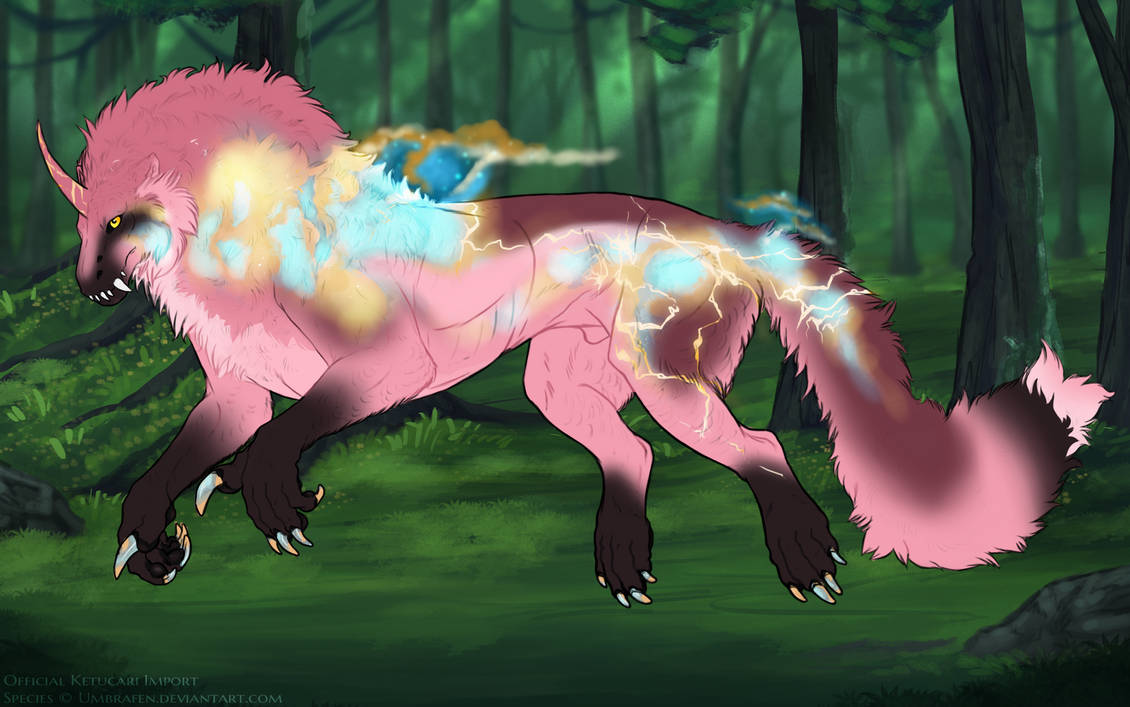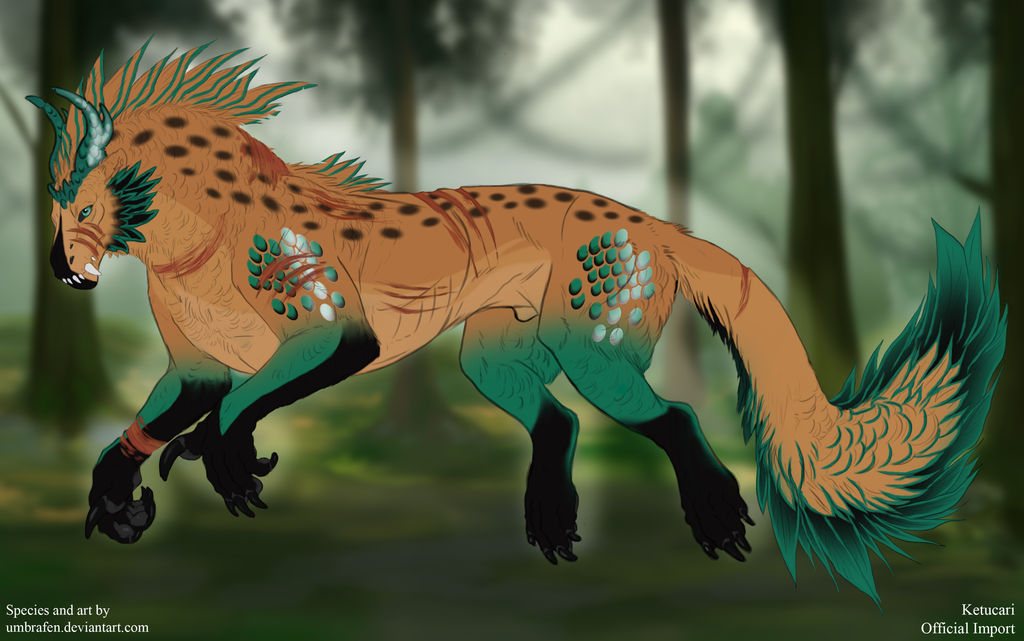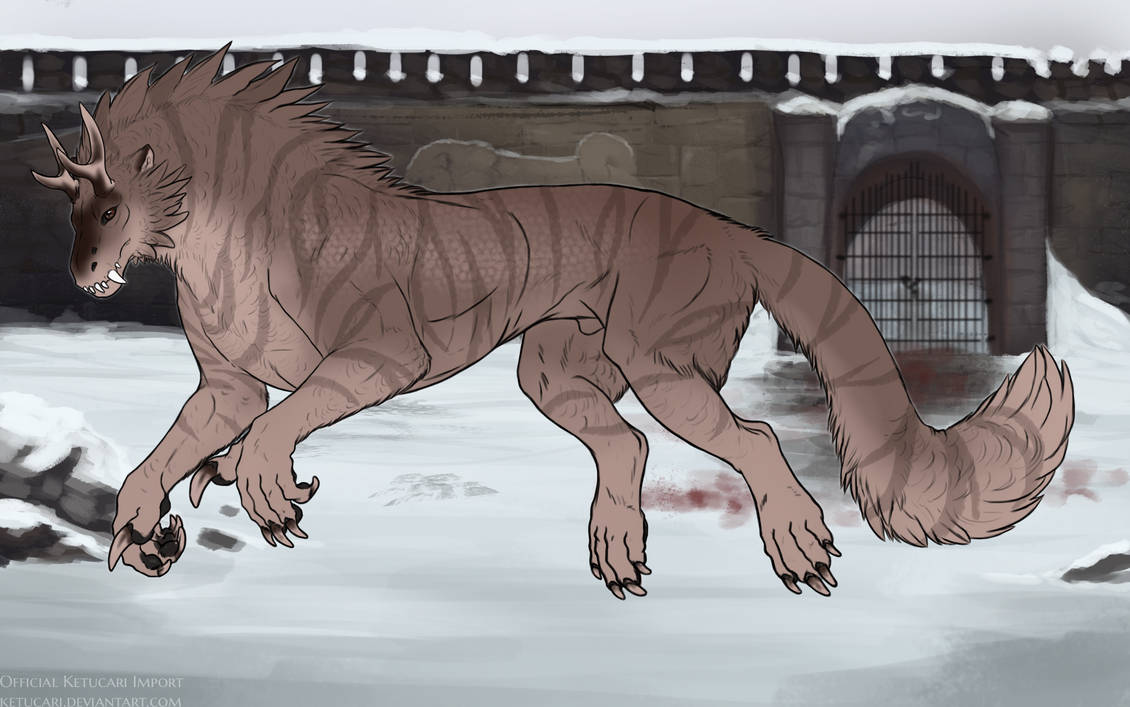Horns
Here are the basics of horns!
• Horns must be genetically inherited in order to appear on your cub's design. They are not a "free for all" like jaw types.
• Horns have no group-defined rarity. The demand for certain horn types is decided by the playerbase.
• Cubs can only inherit horns that their parents possess.
• Horns must be genetically inherited in order to appear on your cub's design. They are not a "free for all" like jaw types.
• Horns have no group-defined rarity. The demand for certain horn types is decided by the playerbase.
• Cubs can only inherit horns that their parents possess.
• Garoch plates follow horn color rules
• Currently, horns only come in primary, secondary, and tertiary placement options.
• Primary horns pass at a 30% rate, while Secondary and Tertiary pass at a 35%
• Primary horns should be positioned on the forehead. They are larger and are sometimes more ornate than secondaries.
• Secondary horns are positioned on the bridge of the nose.
• Tertiary horns are positioned in the cheek and lower jaw areas.
• An individual ketucari can only have one primary set and one secondary set of horns and one set of tertiary horns.
All currently available horns can be found in one of these packs, along with instructions on how to apply them to your design:
Standard/Ryno:
Danuoc:
Garoch:
Please note that all horns can be used on any build if edited to fit; they are grouped by the base they were drawn for.
Horn Types
This is a listing of all current horn types!
Primary Horns
Horn Color
Like with any other gene, there is a specific set of rules to follow when coloring in your ketucari's horns. Be sure to read thoroughly to make sure your design
is accepted the first time around! Here are the options for coloring horns:



for the hued points. You may also match the horns to the base color or any other marking color your ketucari expresses.
Below, Daniyi's horns have taken on the color of her hued points.

 Horns may have a subtle gradient within the same color (ex. dark blue to light blue) or any two colors found on the ket*
Horns may have a subtle gradient within the same color (ex. dark blue to light blue) or any two colors found on the ket*
 Horns may fade to black or white, similar to cow horns.
Horns may fade to black or white, similar to cow horns.
is accepted the first time around! Here are the options for coloring horns:
Natural Colors
Natural colors (such as gray, brown, tan, and white) are the first option for coloring horns. Bolton, Big Red, and Tashtai all sport the "natural color" option.


Colors Found on the Coat
Alternatively, you may use any color found on your ketucari's coat. For example, if your ketucari has hued points, you may color the horns the same color usedfor the hued points. You may also match the horns to the base color or any other marking color your ketucari expresses.
Below, Daniyi's horns have taken on the color of her hued points.

Gradients and Details
 Horns may have a subtle gradient within the same color (ex. dark blue to light blue) or any two colors found on the ket*
Horns may have a subtle gradient within the same color (ex. dark blue to light blue) or any two colors found on the ket* Horns may fade to black or white, similar to cow horns.
Horns may fade to black or white, similar to cow horns.
Source
 All markings can appear on horns as long as they are recognizeably a result of those genes. Those markings must be present on the ketucari itself.
All markings can appear on horns as long as they are recognizeably a result of those genes. Those markings must be present on the ketucari itself.
Geode appearing on horn

Radiance appearing on and affecting horns.

Piebald affecting horns

Scalemarks on horns.

Simple highlights

Washout+Lacing

Base coat ->Marking gradients.

Dusky+base coat

Dusky + Pangare + highlights
 You may include subtle highlights on horns, as found on Tashtai:
You may include subtle highlights on horns, as found on Tashtai:

• Engravings/scars on horns require Battle Scars from the Marketplace, battles, or the Laurel Shop!

Piebald affecting horns

Scalemarks on horns.

Simple highlights

Washout+Lacing

Base coat ->Marking gradients.

Dusky+base coat

Dusky + Pangare + highlights
 You may include subtle highlights on horns, as found on Tashtai:
You may include subtle highlights on horns, as found on Tashtai:
• Engravings/scars on horns require Battle Scars from the Marketplace, battles, or the Laurel Shop!